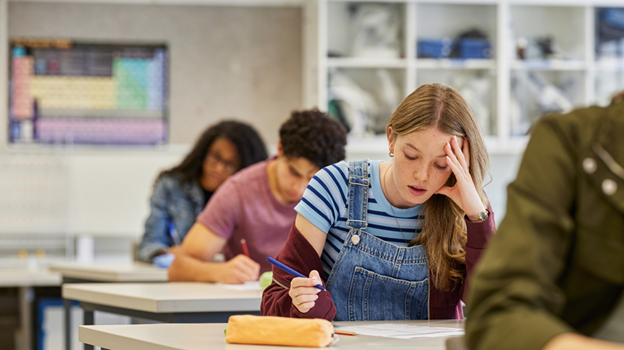Every teacher, whether new to the profession or a seasoned veteran, encounters behavior challenges in the classroom. These behaviors, if left unaddressed, can disrupt learning not only for the student involved but for the entire class. The good news is that most challenges can be managed effectively with the right strategies, consistency, and support systems in place.
Here are five of the most common classroom behavior challenges and practical ways schools and teachers can address them.
1. Disruptive Talking and Off-Task Behavior
The Challenge:
One of the most frequent issues in classrooms is students talking out of turn or becoming easily distracted. These behaviors can derail lessons and make it difficult for teachers to maintain focus.
How to Address It:
Clear expectations are key. Teachers should establish classroom norms at the beginning of the year and reinforce them regularly. Visual reminders, seating arrangements that reduce distractions, and structured routines also help students stay on track. For chronic off-task behavior, teachers can use positive reinforcement—acknowledging and rewarding students who are actively engaged. This shifts the focus from punishment to encouraging desired behaviors.
2. Defiance and Refusal to Follow Directions
The Challenge:
Defiance can manifest as ignoring instructions, arguing with teachers, or deliberately refusing to complete tasks. This behavior can be particularly challenging because it often feels personal.
How to Address It:
It’s important to remain calm and avoid escalating the situation. Teachers can use strategies like offering choices, breaking tasks into smaller steps, or privately addressing the behavior instead of calling a student out in front of peers. Building strong relationships with students helps too; often, defiance stems from a need for autonomy or unmet emotional needs. Establishing trust and mutual respect goes a long way toward reducing oppositional behavior.
3. Inattention and Hyperactivity
The Challenge:
Some students struggle to stay seated, focus on lessons, or regulate their energy levels. This can be especially common in younger grades or among students with attention-related challenges.
How to Address It:
Incorporating movement breaks, flexible seating, or hands-on learning activities can help channel energy productively. Teachers can also provide clear, step-by-step instructions and check in frequently to ensure understanding. Visual schedules and timers support students who need structure. For ongoing challenges, collaboration with parents and school counselors ensures students receive consistent support across settings.
4. Aggression or Bullying
The Challenge:
Aggression—whether physical, verbal, or social—has serious implications for classroom safety and student well-being. Bullying behaviors not only harm victims but also create a culture of fear.
How to Address It:
Immediate intervention is essential. Teachers should establish zero-tolerance policies for aggression and bullying, with clear consequences consistently applied. Just as important, schools should focus on preventative measures, such as social-emotional learning programs that teach empathy, conflict resolution, and respect. Restorative practices, where students involved in conflicts work toward understanding and repairing harm, can be powerful tools to reduce repeat incidents.
5. Withdrawal and Lack of Participation
The Challenge:
Not all behavior challenges are loud or visible. Some students withdraw, avoid participation, or appear disengaged. This can stem from anxiety, lack of confidence, or struggles outside of school.
How to Address It:
Teachers should create inclusive, supportive environments where all voices are valued. Strategies include using small-group discussions, providing alternative ways to participate (such as written responses), and checking in privately with withdrawn students. Building rapport and showing genuine interest in their experiences helps students feel seen and valued. When necessary, connecting students to additional resources—such as counseling—ensures they receive the help they need.
The Role of Proactive Strategies
While each of these challenges requires different approaches, proactive strategies make the biggest difference. Establishing consistent routines, building strong teacher-student relationships, and teaching social-emotional skills are all preventative measures that reduce the likelihood of behavior issues escalating. Schools that prioritize these supports often see improved student outcomes, both academically and emotionally.
For more significant or persistent concerns, structured behavior intervention for students provides additional layers of support. These interventions are designed to address underlying causes, equip students with coping strategies, and reinforce positive behaviors. By combining classroom management strategies with systemic support, schools create environments where all learners can thrive.
Classroom behavior challenges are inevitable, but they don’t have to define the learning experience. By recognizing common patterns—such as disruptive talking, defiance, inattention, aggression, and withdrawal—educators can respond with strategies that are compassionate, consistent, and effective.
When schools commit to addressing these challenges through proactive measures and targeted interventions, they help students develop not only academically but also socially and emotionally. The result is a healthier, more inclusive learning environment where both teachers and students succeed together.




